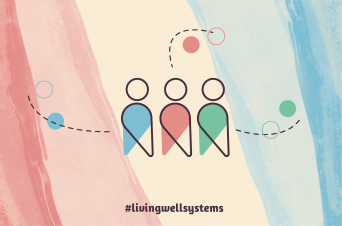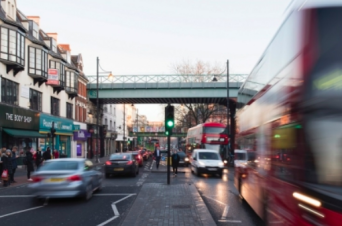Research ~ Community views on violence affecting young people
Violence affecting young people
With Greater Manchester Combined Authority, Greater Manchester
350 in Greater Manchester share their experiences and solutions in a new report on violent crime affecting young people commissioned by The Greater Manchester Combined Authority.
Violent crime is on the rise across the UK and in Greater Manchester, particularly involving young people. The Greater Manchester Combined Authority wanted to understand what is driving this increase and what could be done about it. There was a particular interest in hearing from a range of people from beyond the ‘usual voices’ about their perceptions and experience of violent crime in their communities, to add depth and insight to the statistics.
THE PROBLEM
89%
rise in knife crime offences in Greater Manchester between 2015-18
3
knife crime offences in schools across Greater Manchester every week
The majority of violent crime is not committed by young people; similarly, the vast majority of young people are not involved in violent crime. However, there is evidence to suggest that violence involving young people is increasing more quickly than for the general population.
In February 2019, NHS England released data showing that, while admissions for all injuries caused by an assault with a sharp object had risen by almost a third between 2012 and 2018, admissions of those aged between 10 and 19 had risen by around 55%.
Similarly, ONS data for England and Wales for the year ending March 2018 shows that young people aged 16 to 24 were more likely to be victims of violence than those in older age groups, and more than twice as likely than the general adult population to know their attacker. For victims aged between 10 and 15, the perpetrator was also 86% of the time a pupil at the victim’s school.
Between 2015 and 2018, knife crime offences in Greater Manchester rose by 89%, to 6,196 crimes in 2018. Over half of offences relating to possession involve 10-24 year olds, with one in 10 knife crimes in Greater Manchester committed by 15-19 year olds against victims of the same age.
The Greater Manchester Combined Authority (GMCA), Greater Manchester Police (GMP) and the 10 Greater Manchester local authorities therefore jointly commissioned us to look into what was driving this increase and what could be done to inform their shared action plan to tackle violent crime.
OUR PROCESS
350
people from across the community consulted
326
teachers surveyed
6
key insights
10
recommendations
Our key objective was to investigate violence in the community, but not domestic violence and organised crime networks because of the depth of research needed. Instead the primary focus was violence associated with young people – which we defined as 10-25 year olds. Our fieldwork, insights, and recommendations therefore concentrated more on what was influencing the lives, decisions and behaviours of this group. In particular we looked at gaining a set of insights from a range of people across Greater Manchester who were from beyond the ‘usual voices’.
We began with a pilot in Salford, which was as much about testing the methods as it was gaining insights. We tested nine different research groups including taxi drivers, shop owners, sports groups and the elderly. We also used a variety of methods, but most frequently used informal interviews and semi-structured workshops. Through this pilot we learnt a series of lessons, for instance, for the research groups who were “eyes on the street”, like taxi drivers, a variety of interviewees is more important than quantity. We also learnt that some methods were more insightful than others, for example school workshops yielded more interesting data and insight than say shop owners.
We then rolled this research out to the other nine boroughs across Greater Manchester (GM). We collaborated with the Community Safety Teams across GM to ensure we were talking to the best research groups in the best areas in order to get the most interesting insights. Through this process we ended up with new research groups such as exploring the views of adult offenders, community navigators, homeless hostel residents and faith leaders.
In total we ended up interviewing and running workshops with over 350 individuals, community groups and organisations. This included:
- interviews with young offenders and adult offenders convicted of violent offences;
- workshops with primary and secondary school pupils, young people with special educational needs or disabilities and teenagers attending a Pupil Referral Unit;
- consultations with young people (aged 7-18) taking part in sports programmes and at youth centres;
- conversations with parents of children and young adults in a variety of settings, including at children’s centres;
- conversations with professionals working with families and in the community, including youth workers, children’s centre staff and community navigators;
- conversations with shopkeepers (Salford only), taxi drivers, faith group leaders and older residents;
- interviews with residents of homeless hostels with experience of crime;
- a survey of 326 teachers in primary and secondary schools across
Greater Manchester.
Through conducting this research, we learnt plenty more methodological lessons. From the importance of sequencing the research in order to help verify and test views, to when to use projective techniques and when it is not necessary. Overall it reinforced our belief in the importance of getting community views, not only to understand drivers of behaviour but also to test the recommendations and to begin to start building solutions together.
It is important to say that our methodology was not scientifically structured nor necessarily representative of the wider Greater Manchester community. However as a set of insights into the perceptions, views, feelings, fears and ideas of communities experiencing serious violent crime in Greater Manchester we believe it is an important part of the picture that can help to shape a whole-community response.
Our work led to this report with six key insights and ten recommendations. Read the full report here.
SIX KEY INSIGHTS
- Social media is viewed as amplifying and exacerbating violent conflict.
- There are concerns that young people are growing up in school, home and community environments in which conflict and violence are normalised.
- Changes to neighbourhood policing are seen as the cause of a worsening relationship between communities and police.
- Vulnerability and fear are important drivers in the increase in young people carrying weapons.
- ‘Toxic masculinity’ and pressure to conform appears to increase the likelihood of young men being perpetrators or victims of violent crime.
- Communities feel there is an urgent need to create safe places and strong relationships to divert young people from violent crime.
—
The report: “Community Views on violence affecting young people in Greater Manchester” comes as part of GMCA’s Serious Violence Action Plan. The report was authored by Matthew Horne, Zoe Appleton and Henry Stratford from the Innovation Unit, a social enterprise based in the UK, Australia and New Zealand.
Further information and interviews:
Contact: Victoria Barlow, Slack Communications
victoria@slackcommunications.co.uk and 07841 430 115
Project team
Zoe Appleton
Matthew Horne
Joint Chief Executive Officer





